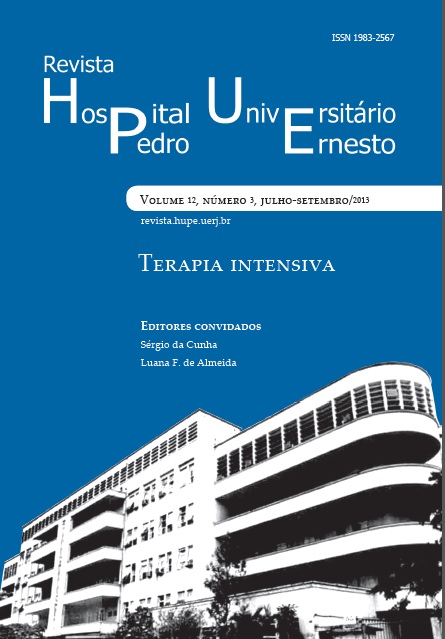Polineuromyopathy in the critically ill patient
DOI:
https://doi.org/10.12957/rhupe.2013.7539Abstract
The critical illness polyneuromyopathy is a high prevalence disease among patients hospitalized in the intensive care unit and exposed to its risk factors, among which sepsis has great importance. This disease causes reduced functionality of the patient and difficulty in getting out from invasive mechanical ventilation, by affecting both nerves and muscles of the limbs as the ventilatory, promoting functional changes in the sarcolemma, causing reduction in their excitability and loss of both muscle fiber type I and type II, as well as affecting muscle mitochondrial function. The clinical management of individuals with critical illness polyneuromyopathy is based on the identification of generalized weakness, exclusion of other causes of muscle weakness extrinsic to critical illness and in measuring muscle strength. The use of the Medical Research Council scale and hand dynamometry are simple methods to identify muscle weakness acquired in the intensive care unit. Some potential therapeutics for critical illness polyneuromyopathy are strict control of blood glucose by insulin infusion, the cautious use of neuromuscular blocking agents and corticosteroids, early rehabilitation and the use of protocols for weaning from invasive mechanical ventilation. However, patient recovery depends on numerous factors, including the individual’s age, underlying disease, comorbidities and level of intensity of rehabilitation. This literature review aims to describe the general characteristics of neuromuscular injury arising from critical illness polyneuromyopathy, the key aspects of its clinical and physical evaluation, the pathophysiology of weaning failure and possible existing therapies for this disease. The multidisciplinary team should be alert to the presence of this disease in order to act early and to reduce its deleterious effects.Downloads
Published
2013-09-30
Issue
Section
Artigos


